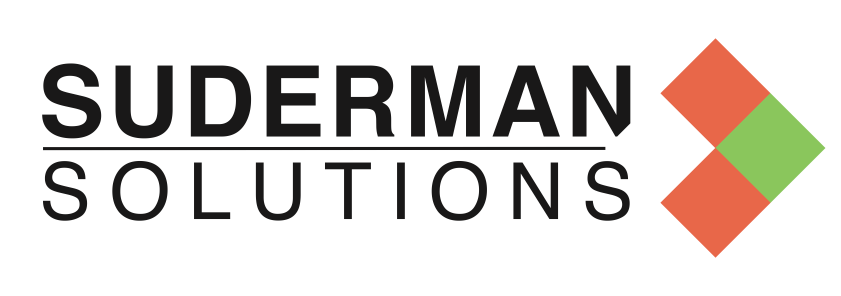APPENDIX 2
VISION
VISION
The vision of Web 3.0 is to take ownership of data and monetization of user data away from big corporations and give it back to the individual, as enabled by these technologies: blockchain and cryptocurrency, decentralized autonomous organizations, decentralized finance, non-fungible tokens. The goal is to create a decentralized space enabling collaboration between users, where end users will have ownership of their data (which is encrypted) that they will be able to sell securely to corporations if they want – such as an individual selling their health data for research.
Web 3.0 brings the human aspect back by providing privacy and security to the users rather than making corporations more powerful than ever. The vision of Web 3.0 changed in the last 7-8 years. Initially, it was simple, but with the introduction of blockchain and bitcoin, the vision and approach have changed completely. Now, Web 3.0 focuses more on the decentralized features that the blockchain has to offer. (101 Blockchains)

RISKS AND MITIGATING FACTORS
Web 3.0 relies on blockchain, which while secure, is not completely free of vulnerabilities. It has been subject to 51% attack (which can be patched) (101 Blockchains). Additionally, the future of Quantum Computing – while still a while on the horizon and facing significant barriers to become viable – may be able to break blockchain. Blockchain is a one way encryption and “quantum computers will be able to calculate the one-way functions, including blockchains, that are used to secure the Internet and financial transactions. Widely deployed one-way encryption will instantly become obsolete.” (Nature). Other traditional security has different lines of defense, such as multi-factor authentication, security questions, identity checks, and even the human element of identity verification (Nature).
Some proposed solutions to head off this vulnerability include:
- Use quantum computers to create quantum cryptography: Barrier to this is high because of infrastructure cost and requirements (Nature).
- Develop alternative encryption functions in the meanwhile (Nature).
- Develop a quantum internet “connecting quantum computers across a quantum communications network” with a timeframe: several decades away (Nature).
- The longer-term answer is to develop and scale up the quantum communication network and, subsequently, the quantum internet. This will take major investments from governments. However, countries will benefit from the greater security offered. Early adopters are those conducting research already. (Nature)
Another doubt that remains is if decentralization is truly possible, if it requires big companies to relinquish their access to power and monetizing data, as is the current status quo.
“Decentralized social networks are a great idea and can change how we think, share, and communicate. However, many experts question its real-world implementation and wonder if it will work or not. For now, we can only wait and see what they hold and offer in the near future.” – 101Blockchains
ENABLING TECHNOLOGIES
● Blockchain and Cryptocurrency – In 2020 the advent of blockchain propelled Web 3.0 forward as it enabled secure, decentralized, transparent transactions (101Blockchains). Cryptocurrency is foundational as it allows users to monetize assets online (or make online purchases) with currencies that span different platforms, factiliating financial interoperability and ownership of identity.
● DAOs (Decentralized autonomous organizations) – emerged from blockchain technology and are “groups centered on a specific mission that work in coordination according to a shared set of rules encoded on a blockchain”. They provide transparency in terms of tracking transactions and balance sheets which are easily publicly available. Governance rules are established by smart contracts and shareholders with tokens vote by majority rule for decision making. These have been hacked before, however (101Blockchains).
● DeFi (Decentralized Finance) – monetary systems that use public blockchains, with no centralized authority, though it does require a centralized open-source regulatory organization. They can be particularly useful for cross-border transactions. Some difficulties: it tends to have low adoption rates currently and requires more bandwidth than Visa transactions, fragmented market due to several companies working on this, some countries ban crypto or make it hard to use. (101Blockchains)
● NFTs (Non-fungible tokens) – are unique, digital items with blockchain-managed ownership; examples include collectibles, game items, digital art, event tickets, domain names, and even ownership records for physical assets (Opensea.io). These are often platform specific but the goal is to develop NFT interoperability across platforms and even provide benefits in the physical world.
FUTURE READING AND SOURCES
- Georgia Weston, January 2022. ‘Web3.0 Vs Metaverse – Key Differences.’ Available at: https://101blockchains.com/web-3-0-vs-metaverse/. Accessed March 2022.
- 101 Blockchains, July 2018. ‘Web 3.0 App Examples.’ Available at: https://101blockchains.com/web-3-0-examples/. Accessed March 2022.
- Georgia Weston, December 2021. ‘Beginner’s Guide to Decentralized Autonomous Organization.’ Available at: https://101blockchains.com/decentralized-autonomous-organization-dao/. Accessed March 2022.
- Diego Geroni, January 2021. ‘What is Decentralized Finance?’ Available at: https://101blockchains.com/decentralized-finance-defi/. Accessed March 2022.
- Abdelaziz Fathi, February 2022. ‘Web3 Foundation Becomes Associate Partner at the World Economic Forum.’ Available at: https://financefeeds.com/web3-foundation-becomes-associate-partner-world-economic-forum/?utm_source=sfmc&utm_medium=email&utm_campaign=2768493_Agenda_weekly-4March2022&utm_term=&emailType=Agenda%20Weekly&fbclid=IwAR1R2ljmu7r02FDwm9iklRL6lX7yGPVGm2mSDB2eY-kd_5MBKRexlVKH9i0. Accessed March 2022.
- https://intelligence.weforum.org/?utm_source=sfmc&utm_medium=email&utm_campaign=2721506_Agenda_weekly-5June2020&utm_term=&emailType=Newsletter&fbclid=IwAR0rBkHebcHNwerjNgb3S__v6m6aUE7yAIbRK8O2VKM4KPJXFbgHQuRo4no (World Economic Forum)
- Aleksey Fedorov, November 2018. ‘Quantum Computers put Blockchain Security at Risk.’ Available at: https://www.nature.com/articles/d41586-018-07449-z. Accessed March 2022.
- Masoud Mohseni, March 2017. ‘Commercialize Quantum Technologies in Five Years.’ Available at: https://www.nature.com/articles/543171a. Accessed March 2022.
- Davide Castelvecchi, October 2018. ‘Here’s what the Quantum Internet has in Store.’ Available at: https://www.nature.com/articles/d41586-018-07129-y. Accessed March 2022.
- Devin Finzer, January 2020. ‘The Non-Fungible Token Bible.’ Available at: https://opensea.io/blog/guides/non-fungible-tokens/. Accessed March 2022.
